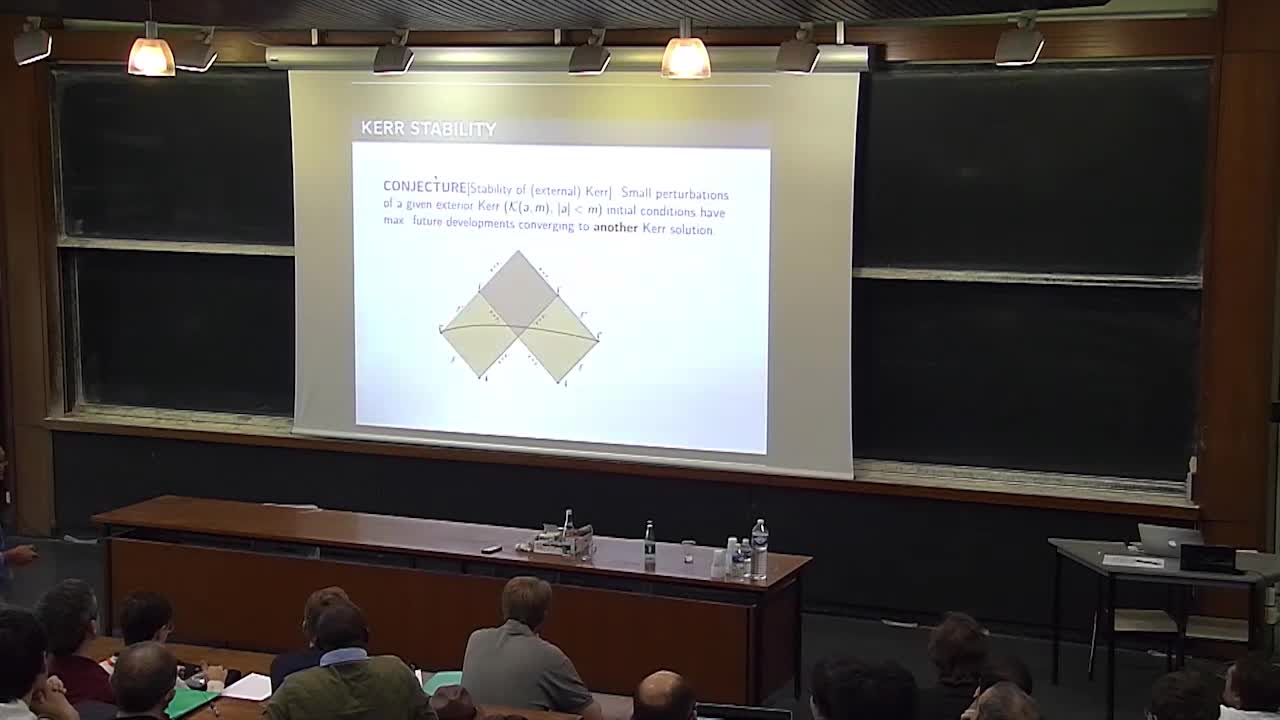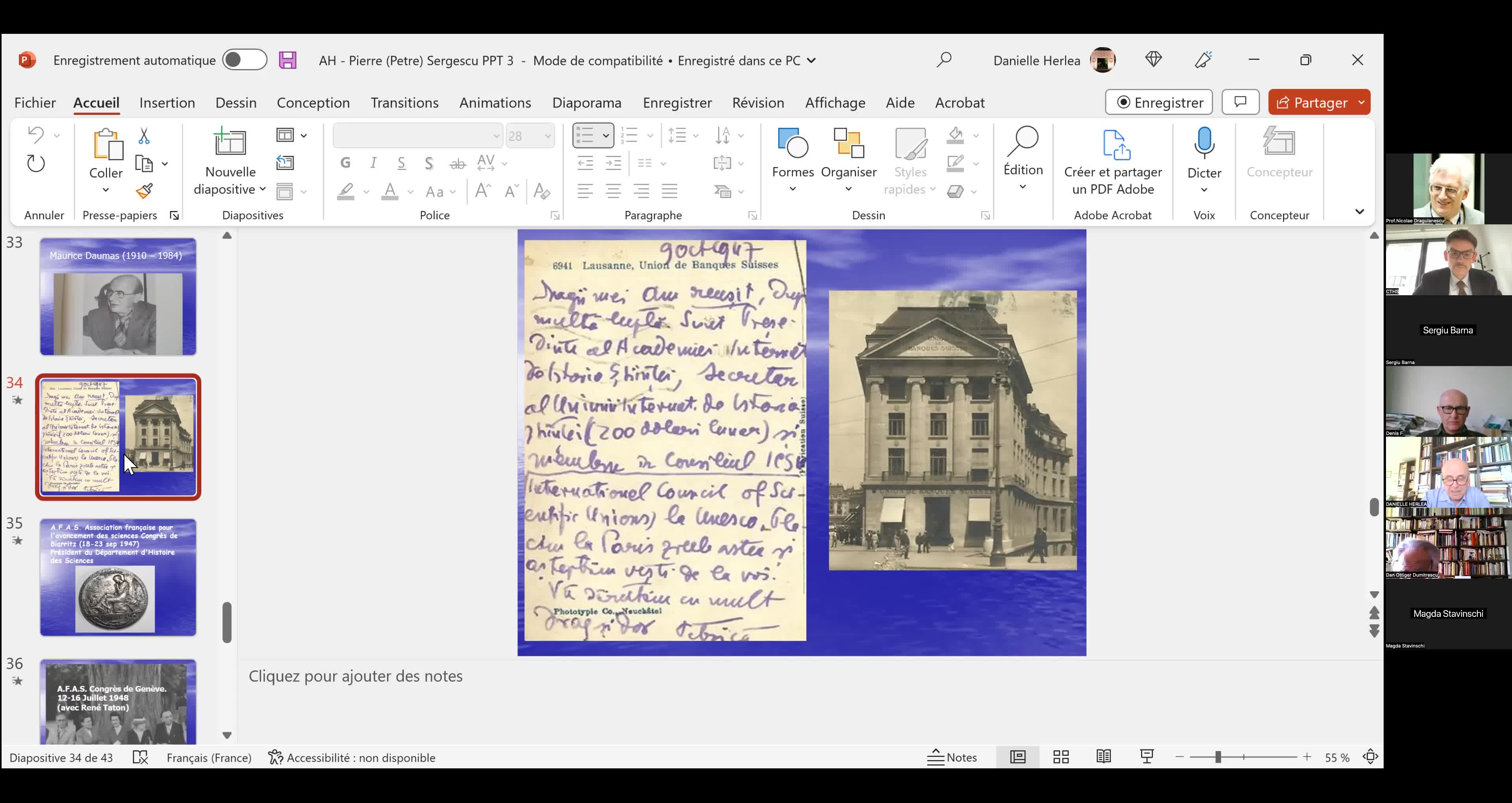Notice
Andras Vasy - Microlocal analysis and wave propagation (Part 1)
- document 1 document 2 document 3
- niveau 1 niveau 2 niveau 3
Descriptif
In these lectures I will explain the basics of microlocal analysis, emphasizing non elliptic problems, such as wave propagation, both on manifolds without boundary, and on manifolds with boundary. In the latter case there is no `standard' algebra of differential, or pseudodifferential, operators; I will discuss two important frameworks: Melrose's totally characteristic, or b, operators and scattering operators. Apart from the algebraic and mapping properties, I will discuss microlocal ellipticity, real principal type propagation, radial points and generalizations, as well as normally hyperbolic trapping. The applications discussed will include Fredholm frameworks (which are thus global even for non elliptic problems!) for the Laplacian on asymptotically hyperbolic spaces and the wave operator on asymptotically de Sitter spaces, scattering theory for `scattering metrics' (such as the `large ends' of cones), wave propagation on asymptotically Minkowski spaces and generalizations (`Lorentzian scattering metrics') and on Kerr de Sitter type spaces. The lectures concentrate on linear PDE, but time permitting I will briefly discuss nonlinear versions. The lecture by the speaker in the final workshop will use these results to solve quasilinear wave equations globally, including describing the asymptotic behavior of solutions, on Kerr de Sitter spaces.
Intervention / Responsable scientifique
Documentation
Liens
Dans la même collection
-
-
Alain Bachelot - Waves in the Anti-de Sitter space-time Ads
BachelotAlainIn this talk we address some issues concerning the wave propagation in the 4D+1 anti de Sitter space time : the role of the conformal
-
Semyon Dyatlov - Spectral gaps for normally hyperbolic trapping
DyatlovSemyonMotivated by wave decay for Kerr and Kerr de Sitter black holes, we study spectral gaps for codimension 2 normally hyperbolic trapped sets with
-
Andras Vasy - Microlocal analysis and wave propagation (Part 3)
In these lectures I will explain the basics of microlocal analysis, emphasizing non elliptic problems, such as wave propagation, both on manifolds without boundary, and on manifolds with boundary. In
-
Maciej Zworski - From redshift effect to classical dynamics : microlocal proof of Smale's conjecture
ZworskiMaciejDynamical zeta functions of Selberg, Smale and Ruelle are analogous to the Riemann zeta function with the product over primes replaced by
-
Pieter Blue - Decay for fields outside black holes
BluePieterI will discuss energy and Morawetz (or integrated local decay) estimates for fields outside black holes. These results build on results for
-
Jérémie Szeftel The resolution of the bounded L2 curvature conjecture in General Relativity (Part 1)
SzeftelJérémieIn order to control locally a space time which satisfies the Einstein equations, what are the minimal assumptions one should make on its
-
Philippe G LeFloch - Weakly regular spacetimes with T2 symmetry
LeFlochPhilippe G.I will discuss the initial value problem for the Einstein equations and present results concerning the existence and asymptotic behavior of
-
Andras Vasy - Quasilinear waves and trapping: Kerr‐de Sitter space
VasyAndrásIn this talk I will describe recent work with Peter Hintz on globally solving quasilinear wave equations in the presence of trapped rays,
-
Claudio Dappiaggi - On the role of asymptotic structures in the construction of quantum states for …
DappiaggiClaudioIn the algebraic approach to quantum field theory on curved backgrounds, there exists a special class of quantum states for free fields,
-
Andras Vasy - Microlocal analysis and wave propagation (Part 2)
In these lectures I will explain the basics of microlocal analysis, emphasizing non elliptic problems, such as wave propagation, both on manifolds without boundary, and on manifolds with boundary. In
-
Jérémie Joudioux - Hertz potentials and the decay of higher spin fields
JoudiouxJérémieThe study of the asymptotic behavior of higher spin fields has proven to be a key point in understanding the stability properties of
Avec les mêmes intervenants et intervenantes
-
Andras Vasy - Quasilinear waves and trapping: Kerr‐de Sitter space
VasyAndrásIn this talk I will describe recent work with Peter Hintz on globally solving quasilinear wave equations in the presence of trapped rays,
-
Andras Vasy - The Feynman propagator and its positivity properties
VasyAndrásOne usually considers wave equations as evolution equations, i.e. imposes initial data and solves them. Equivalently, one can consider the forward and backward solution operators for the wave equation
Sur le même thème
-
Tuan Ta Pesao : écritures de sable et de ficelle à l'Ile d'Ambrym
VandendriesscheEricCe film se déroule au Nord de l’île d’Ambrym, dans l’archipel de Vanuatu, en Mélanésie...
-
"Le mathématicien Petre (Pierre) Sergescu, historien des sciences, personnalité du XXe siècle"
HerléaAlexandreAlexandre HERLEA est membre de la section « Sciences, histoire des sciences et des techniques et archéologie industrielle » du CTHS. Professeur émérite des universités, membre effectif de l'Académie
-
Webinaire sur la rédaction des PGD
LouvetViolaineRédaction des Plans de Gestion de Données (PGD) sous l’angle des besoins de la communauté mathématique.
-
Alexandre Booms : « Usage de matériel pédagogique adapté en géométrie : une transposition à interro…
« Usage de matériel pédagogique adapté en géométrie : une transposition à interroger ». Alexandre Booms, doctorant (Université de Reims Champagne-Ardenne - Cérep UR 4692)
-
R. Perales - Recent Intrinsic Flat Convergence Theorems
PeralesRaquelThéorèmes récents de convergence plane intrinsèque
-
J. Fine - Knots, minimal surfaces and J-holomorphic curves
FineJoëlI will describe work in progress, parts of which are joint with Marcelo Alves. Let L be a knot or link in the 3-sphere. I will explain how one can count minimal surfaces in hyperbolic 4-space
-
J. Wang - Topological rigidity and positive scalar curvature
WangJianIn this talk, we shall describe some topological rigidity and its relationship with positive scalar curvature. Precisely, we will present a proof that a complete contractible 3-manifold with
-
D. Semola - Boundary regularity and stability under lower Ricci bounds
SemolaDanieleThe theory of non smooth spaces with lower Ricci Curvature bounds has undergone huge developments in the last thirty years. On the one hand the impetus came from Gromov’s precompactness theorem
-
D. Stern - Harmonic map methods in spectral geometry
SternDanielOver the last fifty years, the problem of finding sharp upper bounds for area-normalized Laplacian eigenvalues on closed surfaces has attracted the attention of many geometers, due in part to
-
R. Bamler - Compactness and partial regularity theory of Ricci flows in higher dimensions
BamlerRichard H.We present a new compactness theory of Ricci flows. This theory states that any sequence of Ricci flows that is pointed in an appropriate sense, subsequentially converges to a synthetic flow.
-
P. Burkhardt - Pointwise lower scalar curvature bounds for C0 metrics via regularizing Ricci flow
Burkhardt-GuimPaulaWe propose a class of local definitions of weak lower scalar curvature bounds that is well defined for C0 metrics. We show the following: that our definitions are stable under greater-than-second
-
C. Li - Classifying sufficiently connected PSC manifolds in 4 and 5 dimensions
LiChaoIn this talk, I will discuss some recent developments on the topology of closed manifolds admitting Riemannian metrics of positive scalar curvature. In particular, we will prove if a closed PSC

























